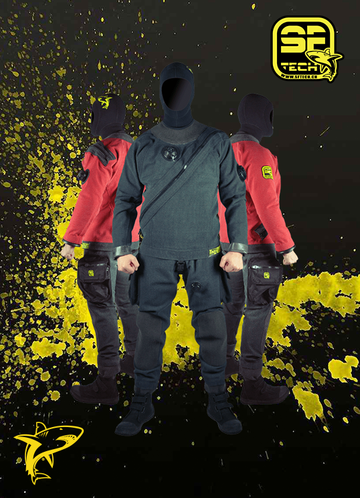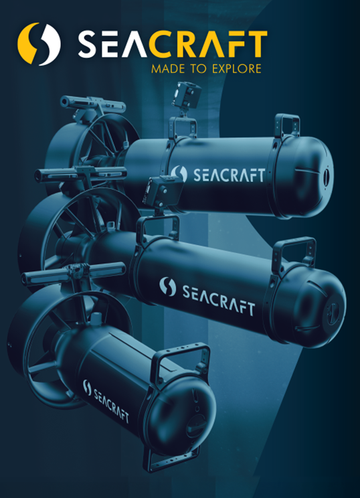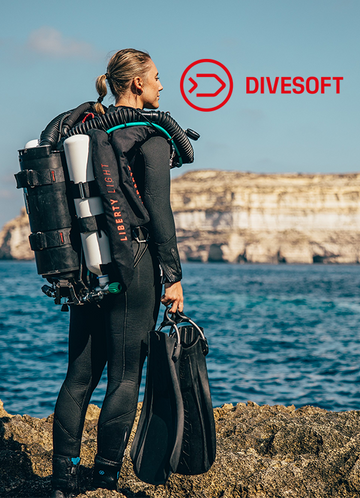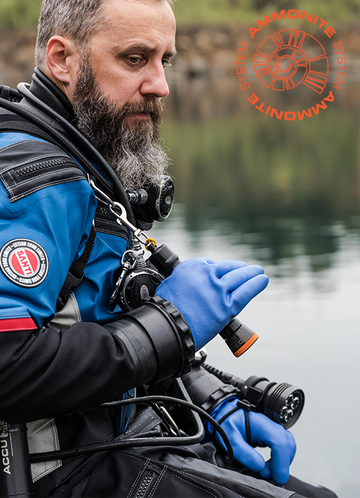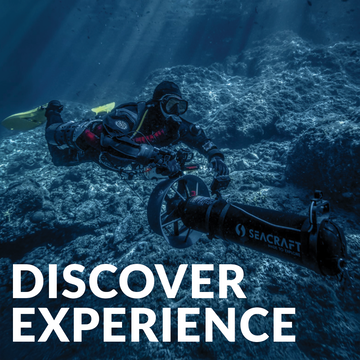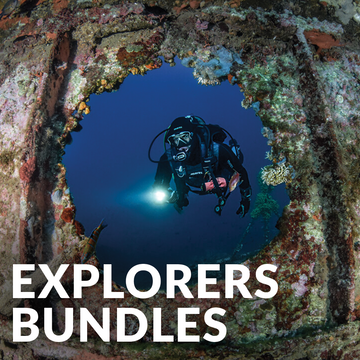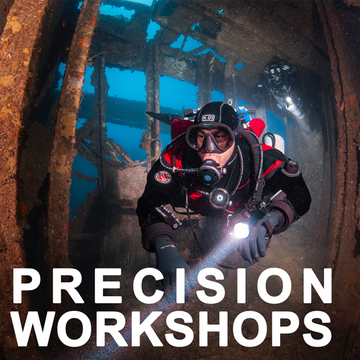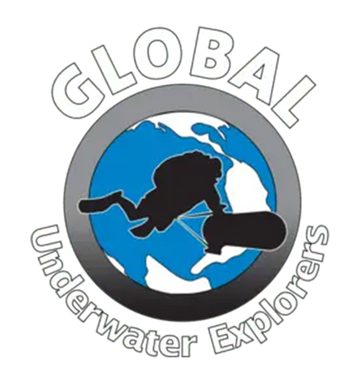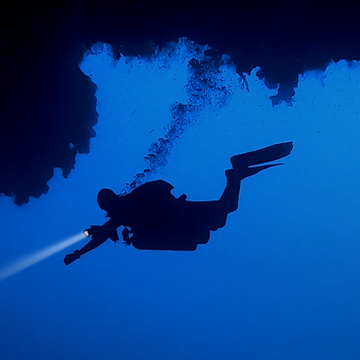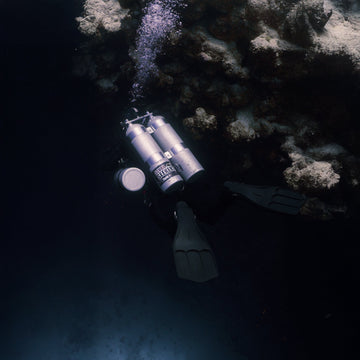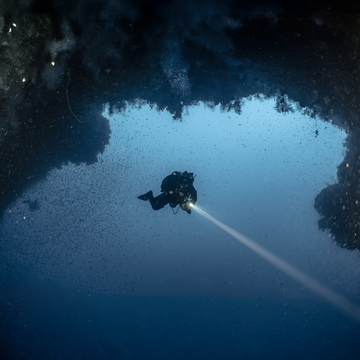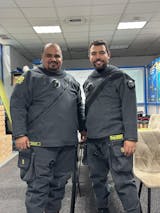During the summer of 2024, I (Greta) traveled to Sardinia, to the small coastal town of Cala Gonone—a European hotspot for cave diving. Sardinia is a charming island in the Mediterranean, known for its rocky landscapes, turquoise beaches, and delicious Italian food. While most visitors come for sunbathing and sightseeing, my journey had a very different purpose.
In 2023, I was selected as one of ten GUE NextGen scholarship trainees, earning the incredible opportunity to participate in several cave diving projects across Sardinia. I was advised to come for more than just a week or two due to the packed schedule of summer expeditions. So, I booked a 40-day stay, dedicating nearly six weeks to the world beneath the surface.
Between training days and projects, I had very few breaks. I hardly visited the typical tourist spots, save for one—the famous Bue Marino Cave. But unlike most visitors, I got to experience it in a way only a handful ever will: from the perspective of a cave diver.
The first project I joined was the Ecosystem Characterization of the Bue Marino Cave System, organized by GUE Cave instructor—Peter Gärtner and the Phreatic organization. The Bue Marino system is one of Sardinia’s most iconic caves. Stretching over 70 kilometers, it winds beneath the Supramonte mountain range and features both dry passages and submerged tunnels. With its entrance directly on the coastline, the cave offers a dramatic meeting of sea and land. Underwater, further into the cave, at around 5–6 meters of depth, divers encounter a halocline—the boundary where warmer saltwater meets cold, year-round freshwater (15°C).
The project's primary goal was to collect scientifically valuable data from various sections of the cave. To do this, we formed five dive teams. Certified Cave DPV divers were tasked with surveying the furthest and most remote areas, while Cave 1 divers worked closer to the entrance. Each team was responsible for gathering specific data:
- Measuring the size and position of air pockets within the cave
- Collecting sand and sediment samples from both shallow and deeper layers
- Sampling water from above, through, and below the halocline to analyze salinity differences
- Observing and recording aquatic life, including isopods, shrimps, sponges, fish, and tunicates
All data had to be recorded with depth, time, and location references. Survey cookies were used to mark specific collection sites, and teamwork was essential: one diver would conduct the task while the other ensured safety, monitored the environment, and took notes about the findings in wetnotes.
While this was a scientific mission, my role had an added layer—I was also the videographer. Documenting the project was a huge part of my contribution, and it became an incredible learning experience. Filming underwater in caves presents unique challenges: low light, tight or, in our case, very large spaces (which bring their own difficulties), silt that can easily reduce visibility, and the constant need to prioritize safety. Still, capturing this process—divers working with tools, carefully extracting samples, communicating through hand signals and lights, and navigating complex passages—was deeply rewarding. I aimed to create not just a visual record, but a storytelling piece that could communicate the significance of this work to a broader audience.
I interviewed the project lead, Peter Gärtner, at the end of the project. He shared insights into the findings, the cave’s unique ecosystem, and the importance of these conservation efforts. Afterwards, I created a short documentary, showcasing not only the scientific side of the project but also the work of the citizen scientists and researchers behind it—divers from around the world coming together to explore and protect a hidden world.
Why Projects Like This Matter—For Today and Tomorrow
Scientific cave diving projects like the Bue Marino ecosystem survey are not just about exploration—they are essential for understanding and preserving the fragile environments beneath our feet (and fins). Submerged caves are among the least studied and most vulnerable ecosystems on Earth. Because of their isolation, they often contain rare species, unique chemical compositions, and valuable climate records preserved in sediments and water layers.
Studying haloclines, aquatic life, and geological structures in these caves helps scientists monitor freshwater-saltwater interactions, understand biodiversity in extreme environments, and even track signs of environmental change. These findings can influence broader climate science, freshwater conservation, and habitat protection efforts.
Beyond that, projects like this highlight the impact of citizen science. Many of the divers involved aren’t professional researchers—they’re trained volunteers who extend the reach of science by accessing places that traditional research methods often can’t. Their dedication, combined with proper training, enables the collection of data that would otherwise be impossible.
And this is where documentation matters. Through film, photography, and storytelling, we can bring awareness to these hidden ecosystems and the people working to protect them. Making these efforts visible helps educate the public, inspire future divers, and encourage support for ongoing research and conservation work.
Final Reflections
The Bue Marino project challenged me and pushed my ability to multitask—always with safety as the number one priority. I also learned new terms, scientific procedures, and the discipline required to film in such demanding environments. But I left with a sense of achievement and growth—and a hard drive full of footage that I can't wait to share with the world.
This was more than just a diving trip. It was a glimpse into what meaningful, purpose-driven diving can look like—and I hope it inspires more divers to explore the possibilities of project diving.
